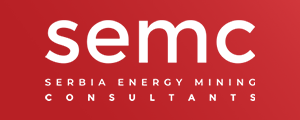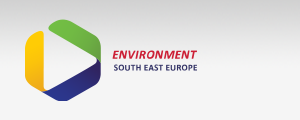世界银行表示,到2050年,石墨,锂和钴的产量必须增加450%以上
Last year, the World Bank indicated that graphite, lithium, and cobalt production must increase by more than 450% by 2050 to meet the demand for energy storage technologies. Is the energy transition in danger? Do we have to exploit resources massively in Europe to avoid becoming dependent on imports? Green MEPs have an alternative plan.
以下意见由三个绿色欧洲议会议员共同签名:萨拉·马修(Sara Matthieu)(比利时),曼努埃拉·里帕(Manuela Ripa)(德国),和Henrike Hahn(德国)。
每隔一段时间,令人沮丧的头条新闻警告我们,成功实施绿色协议所需的关键金属短缺,至少达到了巴黎气候目标。我们在本月初再次目睹了这一点,当时国际货币基金组织(IMF)提醒我们,由于需求的期望值异常高,钴和锂等人的金属价格飙升。
我们需要认真对待这一挑战。正如IMF研究人员所暗示的那样,如果锂和钴等金属的价格大大提高,那么这种瓶颈可能会有效地使能源过渡处于危险之中。
更新的采矿疯狂
毫不奇怪,委员会在2020年9月发布的关键原材料行动计划远比其前任获得了更多的关注,因为它试图解决具有高经济重要性的原材料的供应风险。鉴于绿色交易,很明显为什么锂,钴和各种稀土元素包含在30个关键原材料列表中。
It is also clear that this action plan acts as a catalyst to resuscitate mining projects for these critical raw materials inside and outside EU borders. While we should not dismiss these out of hand, we urgently need to draw a line when it comes to protected areas. In Portugal, for instance, 28% of the areas allocated for lithium exploration are inside nationally protected areas, such as the Serra da Argamela, part of a Natura 2000 area.
The status of Natura 2000 doesn’t provide any guarantees against mining operations, as evidenced by the attempts to extract rare earth elements at Norra Kärr in Sweden or the plans to mine copper and nickel deposits in the Viiankiaapa peatland in Finland. Other examples, such as San Finx in Galicia, point to the lack of specific environmental impact assessments on Natura 2000 areas. These examples show that public or economic interests put unique habitats in Europe at risk already today. This pressure will only increase as time goes on.
保存保护区的三个很好的理由
一些决策者认为,我们需要“平衡生物多样性和经济目标”,以确保绿色过渡所需的金属。这是用于开放大型采矿的保护区的代码语言。但是,出于三个主要原因,更诚实的平衡行为将需要维护欧盟保护区的完整性。
首先,这些保护区是独一无二的,不能被定义所取代,也无法恢复。保持它们完整对于避免欧盟生物多样性的进一步崩溃至关重要。其次,我们冒着对绿色协议和生态过渡的大规模大众反弹的风险。自然保护是许多欧盟公民的优先事项。
第三,通过开始新的采矿项目危害这些关键领域,不会从根本上减少欧盟对进口关键原材料的依赖。换句话说,能力和经济增长的相对较小的增加根本不能证明欧盟独特的文化和自然栖息地的破坏是合理的。
将挑战置于视角
Relatively speaking, we will need certain metals in much larger quantities for the energy transition. However, in absolute terms, the increase in demand is relatively modest. Take global lithium production, estimated at 86,000 tons in 2019. A 45-fold increase translates to a total of 3.8 million tons. That sounds impressive, but it corresponds to only 0.0016 % of iron production in 2019, estimated at around 2.454 million tons.
Secondly, green technologies are the key driver for only 6 out of 30 critical raw materials. According to a report by the öko-institut, commissioned by Henrike Hahn of the Greens/EFA, these six materials are cobalt, lithium, niobium, tantalum, heavy and light rare earth elements. Demand for most other critical raw materials is primarily driven by other sectors such as digitalisation, defence, aeronautics and even agriculture. Contrary to popular framing, the green transition only partly increases demand for critical raw materials.
此外,根据核心的绿色协议,一项更新的欧洲工业战略需要基于合理的方法论基础的CRM需求预测。因此,委员会应仔细审查批判性评估方法,因为当前的假设导致对未来CRM需求的膨胀预测。
长期思考
1980年,邓小平打趣道:“中东有石油,中国有稀土金属。”近几十年来,中国在绿色技术中建立了强大的工业生态系统也就不足为奇了。我们认为,即使我们面临短期挑战,欧洲也需要类似的长期思考。
如今,欧洲的大部分关注都用于探索,欧洲和国外新采矿的筹集和发展,这是由于担心迫在眉睫的短缺。尽管这是必要的,但在欧洲在新基础设施中建造材料库存的同时,它不应损害总体目标。
不仅如此,它也是启动循环行业并创造新工作的独特机会。Öko-Institute估计,在接下来的15年中,仅在牵引电池回收领域中,我们就可以在牵引电池回收领域中产生10,000多个工作岗位。从经济上讲,这比利用保护区的长期观点更好,冒着对绿色交易的大规模反弹的风险。
绿色交易为所有这些提供了一个绝佳的框架,现在是时候让车轮运动了。
资料来源:euractiv.com
最新的帖子
- Medgold Resources已签署了一项具有约束力的选项协议,以在塞尔维亚南部的Tlamino黄金项目中出售100%的权益至Metalstech
- 速度练习选项可在保加利亚的Makedontsi黄金项目中获得70%的股份
- GeoPromining Gold LLC打算在2025年运营亚美尼亚的Sotk Gold Mine
- 去年,一个小规模的发生在一个“战斗”picturesque stretch of mountains in Armenia’s Vayots Dzor region
- The gold mine has been through four stages of development since it was founded and a fifth development phase is currently underway
流行帖子
- Rio Tinto is ecological catastrophe for Serbian citizens
- 马其顿的主要自然资源是什么?乐动软件最新版
- Serbia has the world’s largest lithium reserves
- 塞尔维亚铅锌,铜,黄金透视存款由外国公司管理
- Cunico Resources operations in Macedonia & Kosovo, links with Gabriel Resources-Romania Rosia Montana
- 欧洲未来最大的锌矿之一位于黑山
- 去年,一个小规模的发生在一个“战斗”picturesque stretch of mountains in Armenia’s Vayots Dzor region
- 葡萄牙提高了锂市场的赌注
- Rio Tinto is opening mines in three cities in Serbia
- 芬兰索特卡莫的Terraframe Company Mines铀


